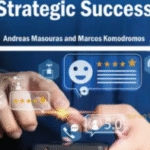The rapid integration of Artificial Intelligence into the business world is fundamentally reshaping how we approach marketing. But when it comes to the classic Marketing Mix—the “4 Ps” of Product, Price, Place, and Promotion—are we witnessing a change in the components themselves, or simply a transformation in the way we implement and prioritize them?
AI-driven tools have not only introduced new efficiencies but have also altered the criteria by which marketing decisions are made. Personalization, predictive analytics, and real-time consumer insights are replacing intuition and static research models. As a result, the selection and design of a marketing strategy’s components are increasingly based on data-driven reasoning rather than conventional experience or market assumptions.
Yet, the core structure of the Marketing Mix arguably remains intact. Products are still developed, prices are still set, channels are still chosen, and promotions are still executed. What has changed is the methodology—the how, not necessarily the what. AI acts as a dynamic force that optimizes each element of the mix, often in real time, based on continuous learning from consumer behavior.
This evolution prompts us to reconsider not just the tools we use, but the strategic mindset with which we approach marketing. As artificial intelligence continues to mature, it may soon challenge even the foundational assumptions of the Marketing Mix itself. The question now is not whether AI will influence marketing, but how deeply it will redefine its very logic.







